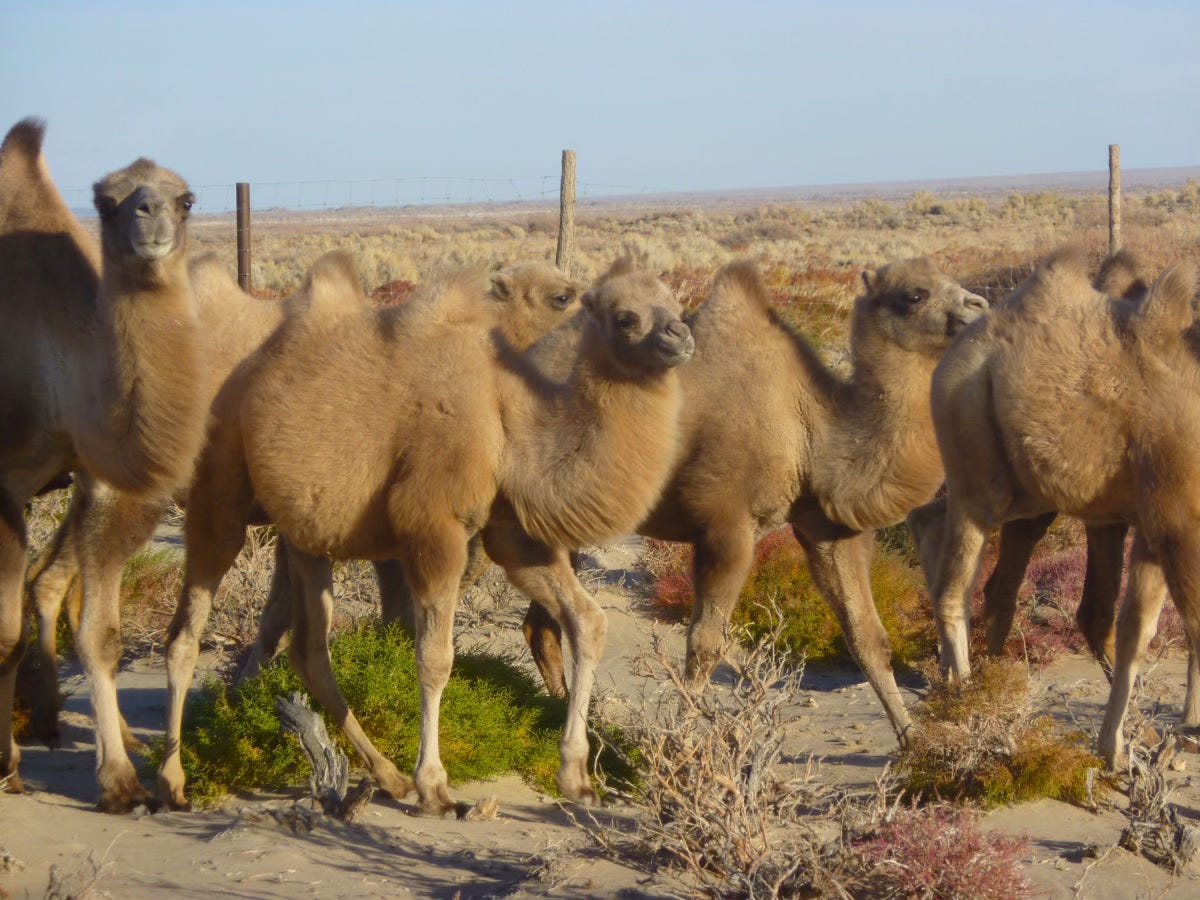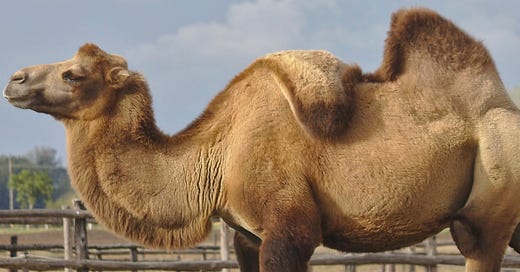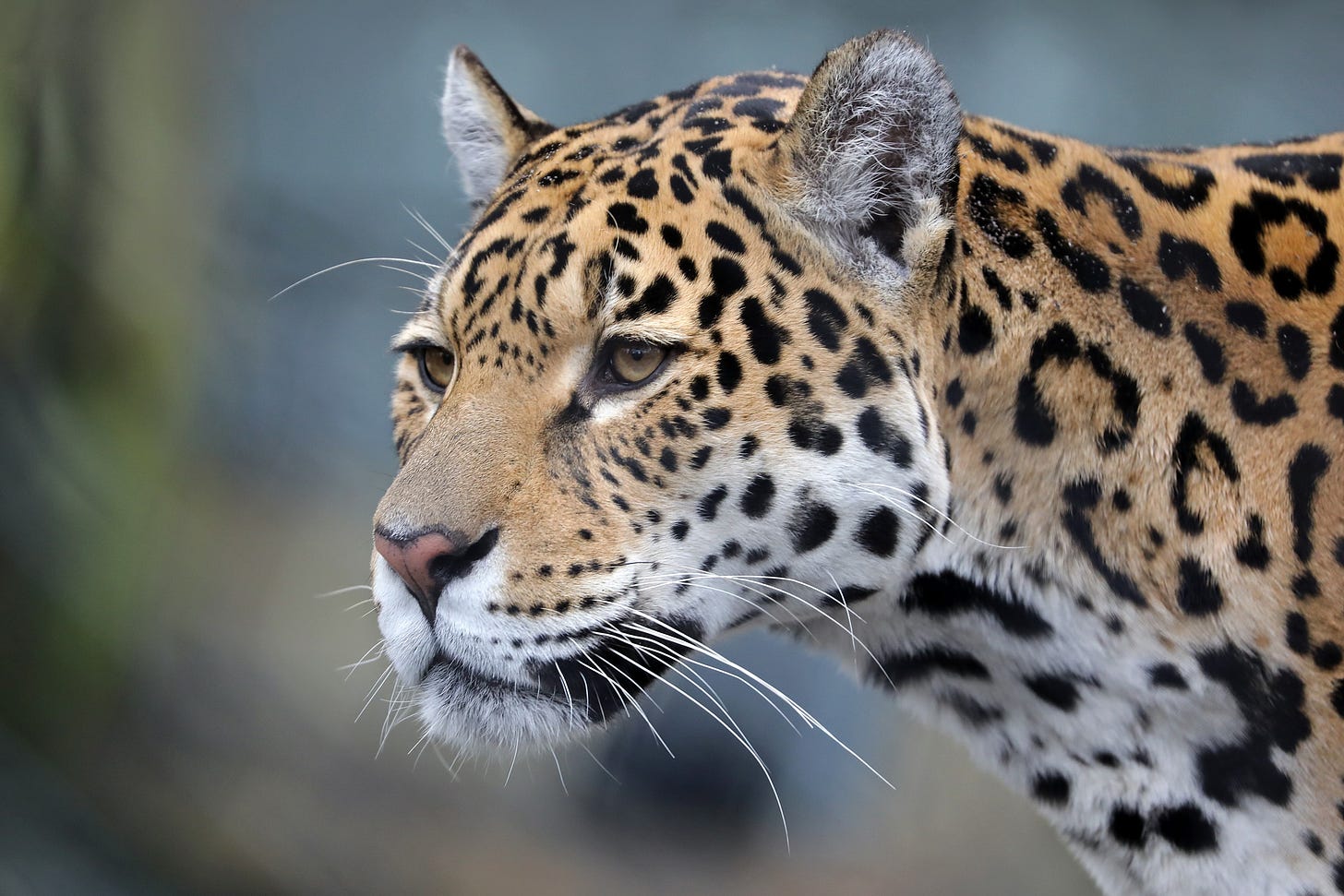The 8th most endangered mammal is one you probably wouldn't guess
When a camel isn't just a camel.
By Dan Fletcher
Here is today’s audio edition!
When you think of big, burly endangered mammals, tigers, rhinos, and pandas likely spring to mind. But there's another critically endangered species that rarely gets attention despite being among the world's most threatened large mammals: the wild camel.
I'm not talking about the domestic dromedaries you might have encountered on vacation or the Bactrian camels with two humps working in zoos and tourist spots. I'm talking about their truly wild cousin — Camelus ferus — a distinct species that ranks as the 8th most endangered large mammal on the planet with fewer than 1,000 individuals remaining.

I didn’t actually know wild camels were a separate species. Until 2008, scientists didn't either. That year, researchers at the University of Veterinary Medicine in Vienna conclusively demonstrated through genetic testing that wild camels are not just feral domestic animals but an entirely separate species that split from domestic Bactrian camels about 700,000 years ago. (They even have a different number of chromosomes.)
Today, these camels are barely holding on in one of Earth's most extreme environments: the remote reaches of the Gobi Desert spanning Mongolia and northwest China. Around 450 individuals remain in Mongolia's Great Gobi Special Protected Area, with another 500 estimated to live across the border in China.
What makes these animals exceptional isn't just their rarity — it's their adaptations to the insane environment. Wild camels can drink saltwater that’s saltier than seawater when fresh water isn't available, something no other mammal on Earth can do. They endure temperature swings from -40°F in winter to 120°F in summer, surviving in conditions that would kill most creatures.
But despite surviving in one of Earth's harshest environments for hundreds of thousands of years, they're rapidly losing ground to new threats: habitat degradation from mining operations, climate change accelerating desertification, and hybridization with domestic camels that wander into their territory.
This is where the Wild Camel Protection Foundation (WCPF) comes in. Since 2003, they've been running the world's only captive breeding program for wild camels in Mongolia, working with the country's Ministry of Nature and Environment and Tourism. The program has already seen successful releases of captive-bred camels back into the protected area — a rare conservation success story for such a critically endangered species.
Directed by Xiaoyu Yang
Now, they're expanding their efforts with a second breeding center in the remote village of Toli Bulag, also located in the buffer zone of the Great Gobi Protected Area. But establishing this center requires substantial infrastructure development, particularly around water resources. In a region where climate change has intensified desertification across nearly 77% of Mongolia's land, ensuring reliable water access is paramount both for the success of the camels and the staff who care for them.
Here’s video of the first round of camels getting transported to the center:
Directed by Xiaoyu Yang
I've been corresponding with Dr. Kah-Wai Lin, a research scientist who traded the lab for filmmaking and founded the Global Heritage Society. He's currently collaborating with the WCPF to raise funds and create compelling media about their wild camel work, including the short film above. As I write this, he's just landed in Mongolia and is headed deep into the Gobi to visit the second breeding center.
Lin has promised to share photos and videos as the camel center develops. His approach resonates with what we're building at FUZZ — small, nimble teams tackling overlooked conservation challenges through direct collaboration with local communities. They're focused on practical solutions rather than just documenting problems.
I'm looking forward to sharing more updates from their project and exploring partnership opportunities in the future. If you're interested in supporting the wild camel conservation effort, you can learn more through the Wild Camel Protection Foundation or Kah-Wai's Global Heritage Society.
Quick links! 🔗
It's rare that a conservation story makes the cover of TIME magazine, but this week’s issue details how scientists at Colossal Biosciences have successfully "de-extincted" dire wolves after 10,000 years of absence. Using ancient DNA samples and genetic engineering, they've created three living dire wolf pups — Romulus, Remus, and Khaleesi — born to domestic dog surrogates. The wolves already exhibit wild behaviors rather than domestic traits, keeping their distance from humans and showing natural hunting instincts. Beyond just reviving extinct species, Colossal aims to apply these technologies to save endangered animals like the critically threatened red wolf.
While I'm a big believer in the benefits of wildlife tourism, a new study shows even success stories need careful management. Jaguar tourism in Brazil's Pantanal wetlands has become so reliable that researchers are calling for new guidelines. The region now hosts the world's highest concentration of jaguars, with sighting probability reaching 94% during peak season. This success has led to overcrowding, with up to 30 boats rushing to each sighting. Researchers suggest tour guides form smaller, coordinated groups rather than broadcasting every jaguar location over open radio. Despite these growing pains, the $6.8 million industry has dramatically shifted local attitudes, transforming jaguars from persecuted cattle predators into protected economic assets.







